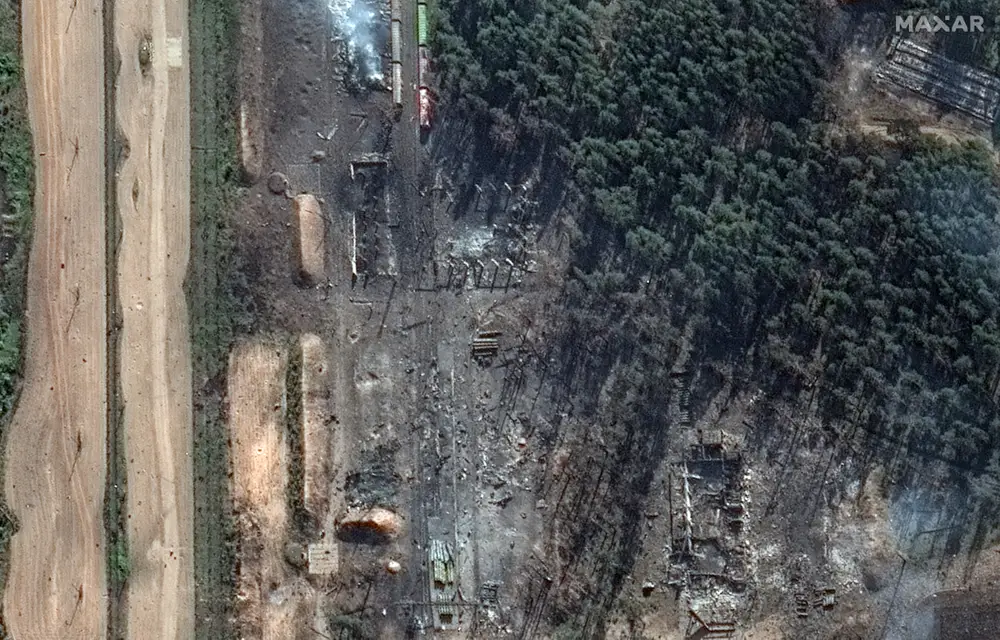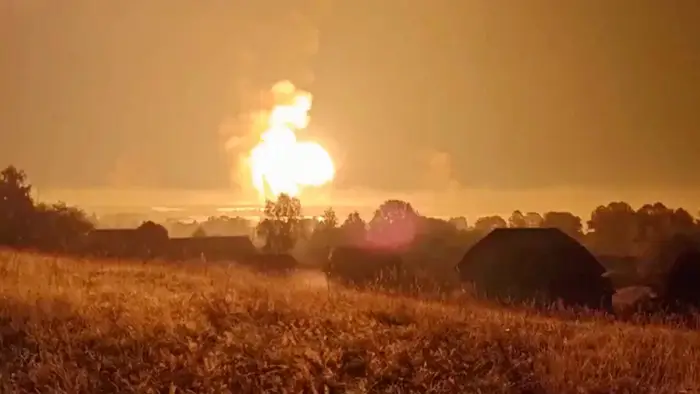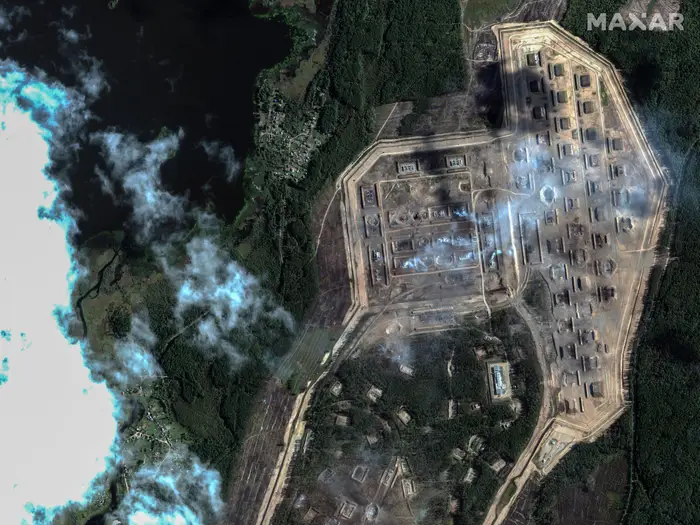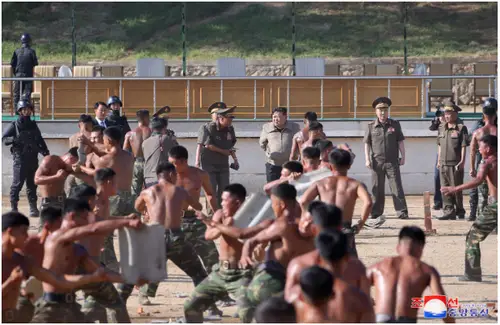Ukraine’s deep strikes on ammo depots and weapons factories across Russia aim to weaken its war machine

The aftermath at a Russian ammunition depot after a Ukrainian attack in September.
Ukrainian forces used long-range strike drones to hit an ammunition depot at a Russian airbase and a large weapons factory in two separate attacks over the weekend.
The strike operations demonstrated Kyiv’s long reach as it targets key military facilities inside Russia. US officials and war analysts have said this deep-strike campaign will likely complicate Moscow’s operations inside Ukraine.
The Ukrainian military said in a post on the Telegram messaging app Sunday that it used drones to hit the Lipetsk-2 airbase during the previous night, striking ammunition depots, fuel storage, and aviation equipment at the site.
Ukraine said the base, located in Russia’s western Lipetsk region, is home to Su-34, Su-35, and MiG-31 fighter aircraft. It’s unclear if any of these warplanes were damaged in the strikes.
In a second attack much deeper inside Russia — roughly 560 miles from the Ukrainian border — Kyiv’s drones struck a major weapons factory in the Nizhny Novgorod region.

An explosion at a Russian ammunition depot in September.
The state-owned defense industry facility, known as the Sverdlov plant, manufactures warheads, artillery shells, and anti-aircraft missiles. Ukraine said it also produces guided glide bombs, the highly destructive weapons Russia has used to wreak havoc on Ukrainian troop positions and civilians.
The US placed sanctions on this plant in July 2023 for its role in making explosives, chemicals, detonators, and ammunition to fuel Russia’s war efforts in Ukraine.
The weekend strikes are the latest in a string of similar attacks executed over the past few weeks that have targeted airbases, ammunition depots, weapons storage facilities, and other sites crucial to supporting the Russian war machine.
Ukraine has relied heavily on domestically produced attack drones for this campaign because it is restricted from using its inventory of powerful, Western-provided cruise and ballistic missiles to strike inside Russia. Kyiv has long tried to get these limitations removed, arguing that they hamstring its ability to fight effectively.
A senior US military official told reporters earlier this month that the Pentagon has observed Ukraine carrying out “successful” long-range drone strikes on targets like Russian ammunition depots, in addition to attacks against energy facilities.

The aftermath of a Ukrainian attack on a Russian ammunition depot in September.
“We do think that those will have some impact on the battlefield,” the official said, explaining that the results won’t be immediate since the targets are far from the front lines.
“We do think that those have been effective, and we’ll see when those effects manifest in a meaningful way,” the official said.
George Barros, the geospatial-intelligence team lead and a Russia analyst at the Institute for the Study of War, told B-17 that Ukraine’s long-range strike campaign could make it more difficult for Moscow to restart offensive operations next spring.
Barros said that even before this recent campaign, the rate of Russia’s advances had slowed due to the sheer intensity of its operations in eastern Ukraine.
He said the Ukrainian campaign targeting strategic facilities like ammunition depots will only accelerate this trend, which is likely to continue over the coming months, especially as the weather worsens and maneuver warfare becomes more difficult.
“They’re going to culminate for a variety of reasons naturally — that is inevitable,” Barros said of Russian offensive perations. “But I think the ammunition losses accelerate it.”






